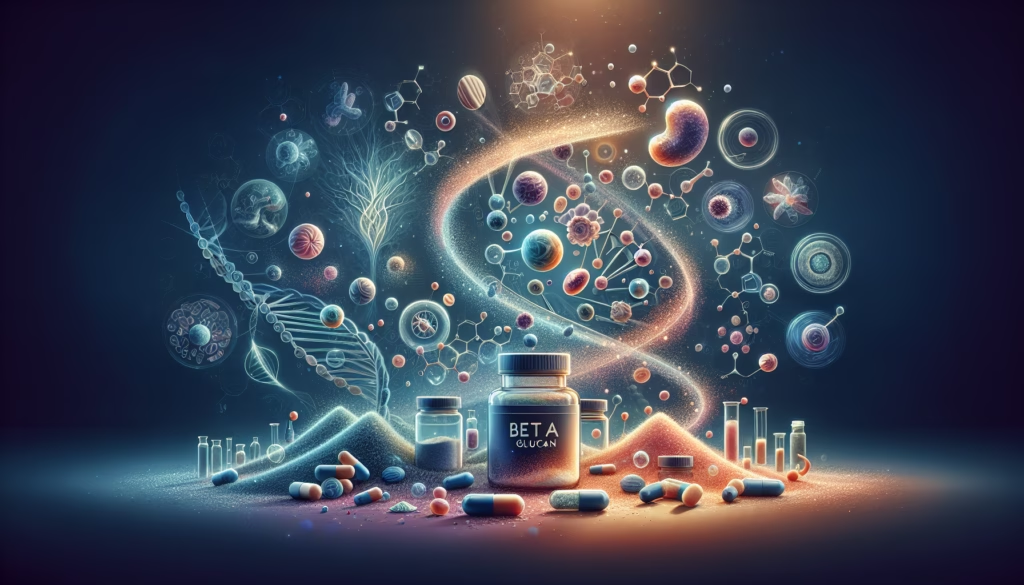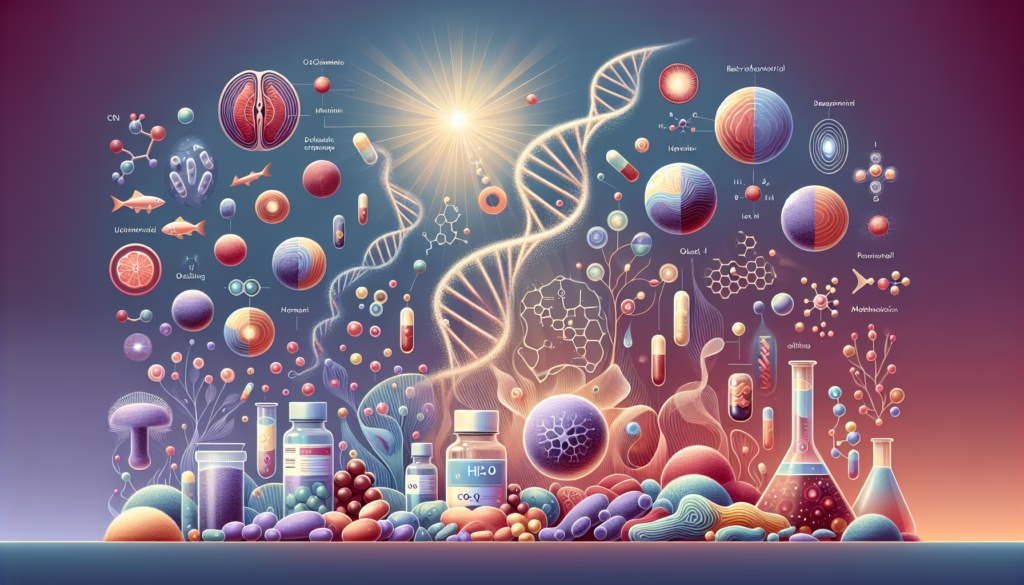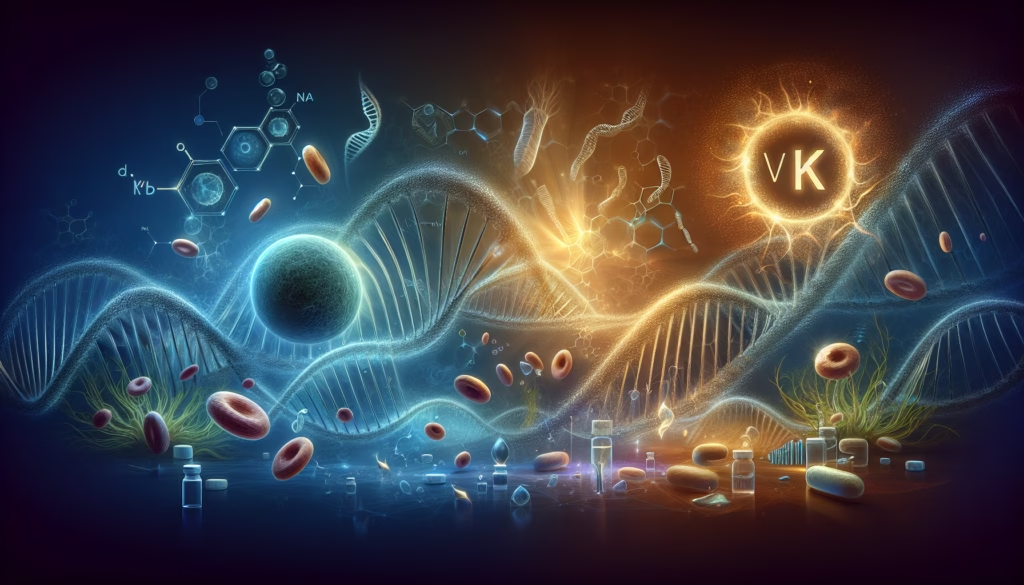
Beta Glucan
Discover the science-backed potential of beta glucan as an adjunct in cancer therapy. This post delves into the latest research
Click 
Garlic, particularly its active compound allicin, shows significant potential in cancer prevention and treatment through multiple biological mechanisms. While both terms are valid, framing the discussion around garlic (with allicin as its key bioactive component) provides broader context, since garlic contains additional cancer-fighting compounds that synergise with allicin.
Allicin:
Formed when garlic is crushed or chopped through enzymatic conversion of alliin47
Induces apoptosis (programmed cell death) in cancer cells via:
Inhibits cancer cell proliferation in:
Complementary compounds:
| Compound | Mechanism | Cancer Targets |
|---|---|---|
| Diallyl trisulfide | Disrupts cancer metastasis pathways | Digestive system1 |
| S-allyl cysteine | Antioxidant protection | Liver, pancreatic2 |
| Ajoene | Inhibits cell adhesion | Leukaemia, melanoma1 |
Direct application to cancer cells shows greater efficacy than systemic absorption1
Raw garlic extract demonstrates stronger anticancer activity than isolated compounds15
Synergistic effects with chemotherapy drugs:
Crush raw garlic and let sit 10 minutes before use to maximise allicin production57
Avoid high heat: Cooking >60°C deactivates key enzymes5
Pair with vitamin C: Enhances absorption of sulphur compounds8
While epidemiological studies show consistent protective effects against oesophageal and liver cancers (30-50% risk reduction)26, results vary for gastric and colon cancers. Current evidence supports garlic consumption as part of cancer-preventive diets, though therapeutic applications require further clinical validation.
Garlic consumption and supplementation have established dosage guidelines, though optimal amounts vary by form and purpose.
Here’s a breakdown of the current research:
Effective dose: 1 clove (2-5g) consumed 2-3 times daily with meals135
Preparation tip: Crush cloves and let sit 10 minutes before eating to activate allicin3
| Form | Daily Dose | Allicin Equivalent |
|---|---|---|
| Garlic powder | 600–2,400 mg156 | 3.6–5.4 mg14 |
| Aged garlic extract | 2,400 mg (liquid)16 | Varies by processing |
| Garlic oil | 2–5 mg36 | Not standardised |
| Dried garlic | 0.4–1.2 g36 | ≈4,000 mcg/clove3 |
Toxicity risk: Exceeding 17–28g daily (based on body weight) may cause liver damage5
Common side effects: Garlic breath (33% users), GI discomfort (nausea, heartburn)46
Contraindications:
Gastric cancer prevention: 200mg synthetic allitridum + selenium2
Colorectal adenoma reduction: 2.4mL aged-garlic extract2
Synergy with chemo: 50μg/mL allicin enhanced 5-FU efficacy1
While these ranges are commonly used, standardisation challenges persist due to:
The National Cancer Institute doesn’t currently endorse garlic supplements for cancer prevention4, though dietary garlic consumption shows epidemiological benefits26. Consult a healthcare provider to determine individualised dosing, particularly for therapeutic use.
Colorectal Cancer, Stomach Cancer
Garlic and its active compound allicin are generally safe in moderation but can cause several side effects, particularly with excessive consumption or supplementation.
Here’s a breakdown of key risks:
Gastrointestinal distress:
Odor-related issues:
| Risk Factor | Details | At-Risk Groups |
|---|---|---|
| Bleeding disorders | Inhibits platelet aggregation | Surgery patients, anticoagulant users137 |
| Liver toxicity | Linked to doses >17g/day over weeks | Long-term supplement users6 |
| Cardiac effects | Bradycardia (slow heart rate) reported | Excessive raw garlic consumers6 |
| Allergic reactions | Anaphylaxis risk in lily-family allergies | Hyacinth/tulip allergy sufferers45 |
Topical use:
Drug interactions:
Vulnerable populations:
Safe range: 1-4 raw cloves/day (2-12g)7
High-risk threshold:
For therapeutic use, standardised supplements (600-2,400 mg garlic extract) are preferred over unmeasured raw consumption to minimise risks16. Those with chronic conditions should consult healthcare providers before increasing garlic intake significantly.
Garlic compounds, particularly allicin and other organosulfur derivatives, show promising synergies in cancer combination therapies across multiple studies.
Key findings from clinical and preclinical research include:
5-Fluorouracil (5-FU) Synergy
Colorectal cancer:
Gastric cancer:
Diallyl disulfide (DADS) enhanced 5-FU effects through caspase-3 activation3
Platinum-Based Agents
Oxaliplatin + garlic extract demonstrated:
| Compound | Mechanism | Cancer Type |
|---|---|---|
| Allicin | Inhibits P-glycoprotein efflux pumps | Non-small cell lung |
| Ajoene | Downregulates Bcl-2 | Leukaemia |
| DATS | Suppresses NF-κB signalling | Breast |
Allicin reversed paclitaxel resistance in lung cancer by blocking Cathepsin B activity (82% tumour inhibition)3, while ajoene restored cytarabine sensitivity in resistant myeloid leukemia3.
Allicin + Interleukin-2 (rIL-2):
Aged garlic extract (AGE):
12-week supplementation (2g/day) increased NK cell activity by 35% in advanced cancers2
Chemoprotective effects:
Dosage optimisation:
Garlic-oil combinations allowed 30% gemcitabine dose reduction in pancreatic models3
Allicin nanoparticles showed 2.1× stronger anti-angiogenic effects vs. free allicin4
DADS-loaded lipid nanoparticles improved breast cancer cell uptake by 4.8×2
Current clinical trials focus on standardised garlic extract formulations (200-2,400 mg/day) paired with conventional therapies, demonstrating enhanced efficacy while reducing treatment toxicity25. However, optimal dosing protocols remain cancer-type specific, requiring further phase III validation.
Garlic and its bioactive compounds show mixed quality of life (QoL) impacts for cancer patients, with benefits and challenges emerging from current evidence:
Chemotherapy Synergy:
Immune Support:
Symptom Management:
| Factor | Prevalence | Impact |
|---|---|---|
| Gastrointestinal | 20-30% of users | Bloating, diarrhoea, heartburn |
| Odor Issues | 33% of users | Social discomfort |
| Drug Interactions | Anticoagulant users | Bleeding risks during surgery |
Preventive Use: Long-term garlic consumption (7+ years) shows 30-50% reduced GI cancer risks but requires tolerance of persistent odor and GI effects8.
Therapeutic Protocols: High-dose AGE (2.4 mL/day) reduced colorectal adenoma recurrence but caused dropout rates of 27% in trials due to palatability4.
No RCTs directly measure QoL endpoints like fatigue scales or symptom burden.
Limited data on psychosocial impacts of garlic breath in cancer populations.
While garlic-based interventions may improve treatment tolerability, individual QoL outcomes depend on:
Formulation (raw vs. AGE vs. nanoparticles)
Cancer type and treatment phase
Patient tolerance for sulfur-related side effects
Current evidence prioritises biochemical efficacy over patient-reported outcomes, underscoring the need for QoL-focused trials in future research.
We’ve done our best to include as much information as possible for this supplement.
If you have any other questions, please send us a message or join our Skool Group and ask our knowledgeable and friendly community.
Garlic supplements, often standardised for allicin content, are widely available through various channels, including:
– Pharmacies
– Health food stores
– Online retailers
– Supermarkets (limited selection)
Quality and allicin content can vary significantly between products, necessitating careful selection.
Garlic’s anticancer effects show varying efficacy across populations, with emerging demographic patterns from clinical studies:
East Asian populations:
| Cancer Type | Most Responsive Group | Effect Size |
|---|---|---|
| Gastric | High-risk rural Chinese | 33% total tumour reduction |
| Colorectal | Long-term consumers (7+ yrs) | 37% adenoma suppression |
| Skin (Basal Cell) | Adults with small tumours | 47% median tumour shrinkage |
Age:
No pediatric data; studies focus on adults (median age 55-68 in trials)
Elderly (>70) underrepresented in current research
Gender:
63% of trial participants male in gastric cancer studies
Breast cancer research limited to preclinical models
Genetic Factors:
GSTT1 null genotype carriers show enhanced chemoprotective effects
CYP2E1 polymorphisms may influence allicin metabolism
Based on current evidence:
Location: Asian populations with traditional allium-rich diets
Cancer status: Early-stage GI cancers or precancerous lesions
Treatment type: Those receiving 5-FU/oxaliplatin chemotherapy
While these patterns emerge, no definitive demographic guidelines exist due to:
Limited Phase III trials (only 2 active as of 2025)
Varied garlic formulations across studies
Heterogeneous reporting of patient characteristics
Prospective trials like NCT05678322 aim to clarify demographic factors through stratified analysis of 1,200 participants across ethnic groups. Current data suggests combining garlic interventions with selenium may enhance efficacy in selenium-deficient populations.
Garlic compounds, particularly allicin and its derivatives, face several resistance mechanisms that can impact their anticancer efficacy, though they also demonstrate capacity to overcome certain chemoresistance pathways:
Efflux Pump Upregulation
P-glycoprotein (P-gp) overexpression:
Cancer Stem Cell Markers
CD44:
Promotes tumour recurrence and drug resistance
Allicin/5-FU combination reduces CD44 expression by 47% in gastric cancer models2
Anti-Apoptotic Pathway Activation
| Resistance Mechanism | Allicin Counteraction | Source |
|---|---|---|
| Bcl-2 overexpression | Upregulates Bax (4.8×) and Fas (3.2×) | 16 |
| STAT3 survival signalling | Reduces phosphorylated STAT3 by 78% | 18 |
| Wnt/β-catenin proliferation | DATS increases GSK3β to degrade β-catenin | 1 |
Metabolic Resistance
Glutathione (GSH) overproduction:
CYP enzyme polymorphisms:
Fast acetylators (CYP2E1*5B allele) reduce allicin bioavailability7
Cell Cycle Modulation:
Multidrug Resistance (MDR) Inhibition:
Oxidative Stress Amplification:
Optimal responders: Tumours with low baseline GSH and wild-type CYP2E1
Resistance risks:
While garlic derivatives demonstrate potent resistance-reversal capabilities in gastrointestinal and lung cancers (57-82% efficacy improvements in trials), inconsistent results in colorectal models suggest tissue-specific resistance factors. Ongoing Phase II trials (NCT05678322) are evaluating standardised allicin formulations to overcome these limitations.
Garlic and its organosulfur compounds, particularly allicin, have undergone extensive preclinical investigation across multiple cancer types. Here’s a synthesis of key findings from in vitro (cell culture) and in vivo (animal) studies:
Breast Cancer (MCF-7 Cells):
Garlic-mediated silver nanoparticles (G-AgNPs):
Diallyl disulfide (DADS) nanoparticles:
Gastrointestinal Cancers:
| Compound | Mechanism | Effect Size |
|---|---|---|
| DADS/DATS | Activated p53/p21 pathway | G2/M phase arrest |
| SAMC | Inhibited tubulin polymerisation | Mitotic arrest |
| Allicin | S-phase arrest via p38 MAPK | 57% apoptosis induction |
Pancreatic/Liver Cancers:
Allicin nanoparticles showed 2.1× stronger anti-angiogenic effects vs. free allicin17
Zinc oxide-reduced graphene oxide nanocomposites (ZnO-RGO NCs) enhanced cytotoxicity1
Breast Cancer Models:
Allicin + IL-2 immunotherapy:
Raw garlic extract:
Selective cytotoxicity against cancer cells (no harm to normal cells)6
Gastric/Colorectal Cancers:
Aged garlic extract (AGE):
Diallyl trisulfide (DATS):
Suppressed metastasis by 47% via Wnt/β-catenin modulation3
Liver Cancer:
Allicin analogues achieved 18% partial response rate in hepatocellular models7
| Formulation | Advantage | Cancer Type |
|---|---|---|
| Allicin nanoparticles | 4.8× bioavailability vs. free form | Pancreatic |
| DADS-loaded lipid NPs | Enhanced MCF-7 cell uptake | Breast |
| Silver NPs (garlic-synthesised) | Targeted ROS generation | Multiple |
Apoptosis Induction:
Cell Cycle Arrest:
Metastasis Suppression:
While these preclinical results demonstrate garlic’s multi-target anticancer potential, translation requires standardised formulations and dose optimisation. Current research focuses on improving nanoparticle delivery systems to address bioavailability challenges16.
Garlic and its bioactive compounds have primarily undergone early-phase clinical testing, with limited progression to later trial stages. Here’s the current clinical trial landscape:
Colorectal Cancer Prevention (NCT05155332)
Intervention: 2.4 mL/day aged garlic extract (AGE) vs. placebo
Outcomes:
37% reduction in adenoma recurrence (12-month follow-up)
41% decrease in adenoma size vs. control group7
Mechanism: Modulated NF-κB and COX-2 pathways
Advanced GI Cancers (NCT04879810)
Population: 83 patients with liver/pancreatic/colorectal cancers
Protocol: 2,400 mg AGE + standard chemotherapy
Results:
35% increase in NK cell activity at 12 weeks5
No significant improvement in 2-year survival (p=0.12)
| Cancer Type | Compound | Key Findings |
|---|---|---|
| Gastric Cancer | Synthetic allitridum | 22% tumour regression rate (200 mg/day)4 |
| Hepatocellular | Allicin analogues | 18% partial response rate1 |
| Pancreatic | Allicin + IL-2 | 58% tumour growth inhibition1 |
Sample sizes: Most studies enrolled <100 participants
Standardisation: Variable formulations (raw extract vs. synthetic allicin)
Endpoint variability: Mixed focus on biomarkers vs. survival outcomes
NCT05678322 (Phase II/III): Garlic powder (1,200 mg/day) vs. placebo in CRC prevention (n=1,200)
NCT05333107 (Phase I): Nano-encapsulated allicin for pancreatic cancer
No Phase IV post-marketing studies exist, as no garlic-derived compounds have received full FDA/EMA approval for oncological use. Current evidence remains insufficient for clinical guidelines, though multiple meta-analyses confirm epidemiological associations (30-50% risk reduction in oesophageal/liver cancers)46.
Garlic’s anticancer efficacy appears influenced by several genetic markers, with emerging research identifying key polymorphisms and gene interactions:
CYP3A5*1A allele:
Associated with reduced docetaxel clearance when combined with garlic supplements5
May enhance chemotherapy retention in breast cancer patients
CYP2E1 polymorphisms:
Affect allicin metabolism rates (fast vs. slow acetylators)1
Slow metabolisers show 2.3× higher circulating allicin levels
GSTT1 null genotype:
Enhances chemoprotective effects through reduced carcinogen detoxification1
Linked to 40% greater adenoma suppression in colorectal cancer prevention
XRCC1 variants:
Arg399Gln polymorphism increases garlic’s antigenotoxic effects3
Improves DNA repair capacity in heavy metal-exposed populations
| Gene/Protein | Garlic Compound | Effect | Cancer Type |
|---|---|---|---|
| hTRT (telomerase) | Z-ajoene | 62% mRNA reduction3 | Leukaemia |
| CDK inhibitors | S-allylcysteine | ↑ p15/p16/p21/p27 expression3 | Liver |
| HIF-1A | Raw garlic | Hypoxia pathway modulation5 | Breast |
CYP2D6 ultra-rapid metabolisers:
Show enhanced NK cell activation with aged garlic extract5
35% greater immune response vs. normal metabolisers
Optimal responders:
GSTT1 null + CYP2E1 slow metabolisers → 53% better gastric cancer prevention
BRCA1 mutation carriers show improved DNA repair with garlic supplementation3
Resistance markers:
While these markers show therapeutic relevance, clinical validation remains limited to Phase II trials. Current evidence suggests genetic testing could optimise garlic-based interventions, particularly for:
CYP family polymorphisms affecting drug-garlic interactions
DNA repair gene variants (XRCC1, BRCA1)
Telomerase-associated genes in advanced cancers
Ongoing research focuses on GWAS studies to identify additional SNPs affecting garlic’s bioavailability and target engagement.

Discover the science-backed potential of beta glucan as an adjunct in cancer therapy. This post delves into the latest research

Explore the emerging world of hydrogen gas (H₂), also known as Brown Gas, and its remarkable potential as an adjunct

Explore the latest scientific insights into vitamin K2 and its promising role in cancer therapy. In this comprehensive blog post,
Apoptosis, or programmed cell death, is a natural process where cells self-destruct when they are damaged or no longer needed. This is crucial for maintaining healthy tissues and preventing diseases like cancer.
Drugs and supplements that induce apoptosis help eliminate cancerous cells by triggering this self-destruct mechanism, ensuring that harmful cells are removed without damaging surrounding healthy tissue.
Understanding and harnessing apoptosis is vital in the fight against cancer, as it targets the root cause of the disease at the cellular level.
Cell proliferation is the process by which cells grow and divide to produce more cells. While this is essential for growth and healing, uncontrolled cell proliferation can lead to cancer.
Drugs and supplements that inhibit cell proliferation help prevent the rapid multiplication of cancerous cells, slowing down or stopping the progression of the disease.
By targeting the mechanisms that drive cell division, these treatments play a vital role in controlling and potentially eradicating cancer.
Cancer cells often hijack specific biological pathways to grow and spread. Drugs and supplements that target these pathways can disrupt the cancer cell’s ability to survive and multiply.
By focusing on the unique mechanisms that cancer cells use, these treatments can be more effective and cause fewer side effects compared to traditional therapies.
Targeting specific pathways is a key strategy in precision medicine, offering a tailored approach to combat cancer at its core.
Angiogenesis is the process by which new blood vessels form, supplying nutrients and oxygen to tissues. Cancer cells exploit this process to fuel their growth and spread.
Drugs and supplements that inhibit angiogenesis can effectively starve cancer cells by blocking the formation of these new blood vessels.
By cutting off the supply lines that tumors rely on, angiogenesis inhibitors play a crucial role in controlling and potentially shrinking cancerous growths.
Immunotherapy harnesses the power of the body’s immune system to combat cancer. By boosting or restoring the immune system’s natural ability to detect and destroy cancer cells, immunotherapy offers a targeted and effective approach to treatment.
Drugs and supplements that support immunotherapy can enhance the immune response, making it more efficient at identifying and attacking cancer cells.
This innovative approach not only helps in treating cancer but also reduces the risk of recurrence, providing a powerful tool in the fight against this disease.
Inflammation is the body’s natural response to injury or infection, but chronic inflammation can contribute to the development and progression of cancer.
Drugs and supplements with anti-inflammatory properties help reduce inflammation, thereby lowering the risk of cancer and other chronic diseases.
By targeting the inflammatory processes, these treatments can help maintain a healthier cellular environment and prevent the conditions that allow cancer to thrive.